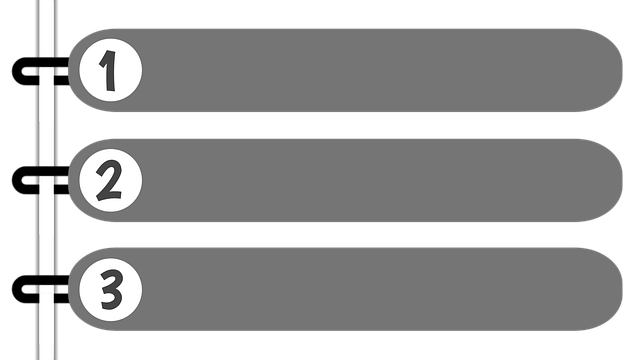What Is Bias In Writing?
Writing is an act of self-expression that can be used to tell stories, state facts, explain concepts and more. However, what happens when your writing is influenced by personal biases?
Bias in writing occurs when the writer has a specific opinion or a preference for one thing over another. When this occurs, the writing is no longer accurate or impartial as it has been swayed by personal opinions or beliefs.
Bias in writing can take many forms — from subtle jabs of sarcasm or exaggeration to blatant misrepresentation of facts and evidence.
Regardless of what form it takes, bias in writing can distort or even hide the truth and make it difficult for readers to trust what the writer is saying. This is why understanding what bias in writing means and how it affects your work is so important.
Why Is Bias Important In Writing?
Though it might seem like something inconsequential, bias in writing can have a huge impact on how people interpret what you write.
It’s important to be aware of what bias means and how to recognize it in your own work so that you can ensure that your writing remains accurate and balanced.
For example, can you identify the writer bias in the following sentence?
“Young girls learn to read at an earlier age than young boys”
According to this statement, 100% of young girls learn to read earlier than 100% of young boys. Now, I personally know a case where this is not true, and a single case is all it takes to illustrate the bias in the above sentence.
When you’re able to identify bias in your own work, you’re more likely to avoid making mistakes that could lead people astray or cause them to doubt the veracity of what you’re saying.
What Are the Main Characteristics of Bias?

Although bias in writing can be characterized in many different ways, there are some patterns you can easily identify. Below are three key characteristics:
Selective omission
Selective omission refers to leaving out key parts of information without giving any reasons for doing so. This is a technique often used to manipulate an audience into embracing a point of view without providing clear evidence.
If undetected, this bias characteristic is very deceiving and can be potentially harmful to your audience, and if detected, it’ll lead to reputational loss for the writer.
Unsubstantiated facts
Unsubstantiated facts involve using phrases like “In fact” and “As a matter of fact” when stating opinions that are not based on verifiable truths.
Most readers will expect those expressions to be followed by a statement of truth, and unsubstantiated facts, whether intended or not, constitute another form of reader manipulation that if unearthed will detract from any authority and trust the writer may have earned.
Language choice
Language choice involves using words with more than one meaning but in the wrong context (whether on purpose or not.)
Readers perceive the meaning of words differently based on context, so if those words are used incorrectly they could convey a misleading meaning to the reader.
What Are the 7 Types of Bias? (with examples)

Here are seven types of biases to be aware of when writing:
Confirmation bias
Confirmation bias occurs when the writer consciously or unconsciously cherry-picks facts and evidence that support what they already believe to be true.
This kind of bias often leads to false conclusions and can sometimes be hard to recognize by the writer.
e.g. “The XYZ diet proves that calorie counting leads to permanent weight loss” (some calorie-counting diets don’t lead to permanent weight loss.)
Anchoring bias
Anchoring bias occurs when the writer relies too heavily on a single source of information or opinion (e.g. only left-leaning media sources or only right-leaning media sources.)
This can lead to an inaccurate representation of what is actually true, as well as distorted conclusions.
e.g. “Globalization has been a net positive force for the economy” (or a net negative force, if you take the opposing view.)
Groupthink bias
Groupthink bias involves showing favoritism towards a person, entity, etc. because it belongs or identifies with the same group as you. This can lead to tribalism, prejudice and misguided opinions.
e.g. “Football fans are the most loyal compared to any other sport” (substitute football with your sport of choice.)
Stereotype bias
Stereotype bias happens when broad generalizations are made about a certain group of people without taking into account individual differences.
e.g. “Young adults are apathetic when it comes to politics and voting” (again, substitute young adults for your group of choice.)
Cultural bias
Cultural bias refers to the tendency of some people to privilege certain cultural beliefs or norms over others.
e.g. “The practice of the x meditation technique is the best path to a balanced life” (how about y or z?)
Assumptive bias
Assumptive bias refers to making statements that are based on unsubstantiated (and often incorrect) assumptions.
e.g. “All gamers are men.”
Generalization bias
Generalization bias takes place when the same ‘catch-all’ filter is applied to large groups of people, professions, entities, etc. treating them as a monolith, when in reality there are clear differences among group members.
e.g. “People in the x, y, or z demographic always vote democrat” (substitute democrat for republican or independent.)
How Do You Avoid Bias In Writing?
Start by striving towards neutrality throughout your writing process. Be aware of how your language choices may affect how readers interpret what you’re saying.
To do this properly, double check all facts against reputable sources that are known for being impartial. This is particularly important when quoting statistics.
Additionally, minimize the use of overly dramatic words such as “always,” “never,” etc. When describing a subject, try to steer clear from using absolutes such as “the best,” “the most,” “the number 1…,” etc.
Finally, strive for transparency in your written communications. Use disclosures where applicable (e.g. you’re describing the merits of investing in a public company where you already own stock.)
In Conclusion
You should make a concerted effort to avoid bias in your professional writing. Take extra care to identify potential biases and eliminate them from your final drafts. Doing so will help make sure that what you write is honest, balanced, and truthful.
Giving your readers reliable information helps build trust with your audience, making them more likely to follow your writing in the future.
Knowing what to look for and how to avoid bias in your nonfiction writing will help you stay above the fray and create honest, accurate pieces that can be trusted by your readers.
Happy writing!

Harry Wallett is the Managing Director of Cascadia Author Services. He has a decade of experience as the Founder and Managing Director of Relay Publishing, which has sold over 3 million copies of books in all genres for its authors, and looks after a team of 50+ industry professionals working across the world.
Harry is inspired by the process of book creation and is passionate about the stories and characters behind the prose. He loves working with the writers and has shepherded 1000s of titles to publication over the years. He knows first-hand what it takes to not only create an unputdownable book, but also how to get it into the hands of the right readers for success.
Books are still one of the most powerful mediums to communicate ideas and establish indisputable authority in a field, boosting your reach and stature. But publishing isn’t a quick and easy process—nor should it be, or everyone would do it!
A professional grade book takes 250+ individual tasks to complete. Cascadia is an expert in every single one of them. Do you want to harness our expertise to launch your book into the stratosphere? Chat with us!








Leave a Reply